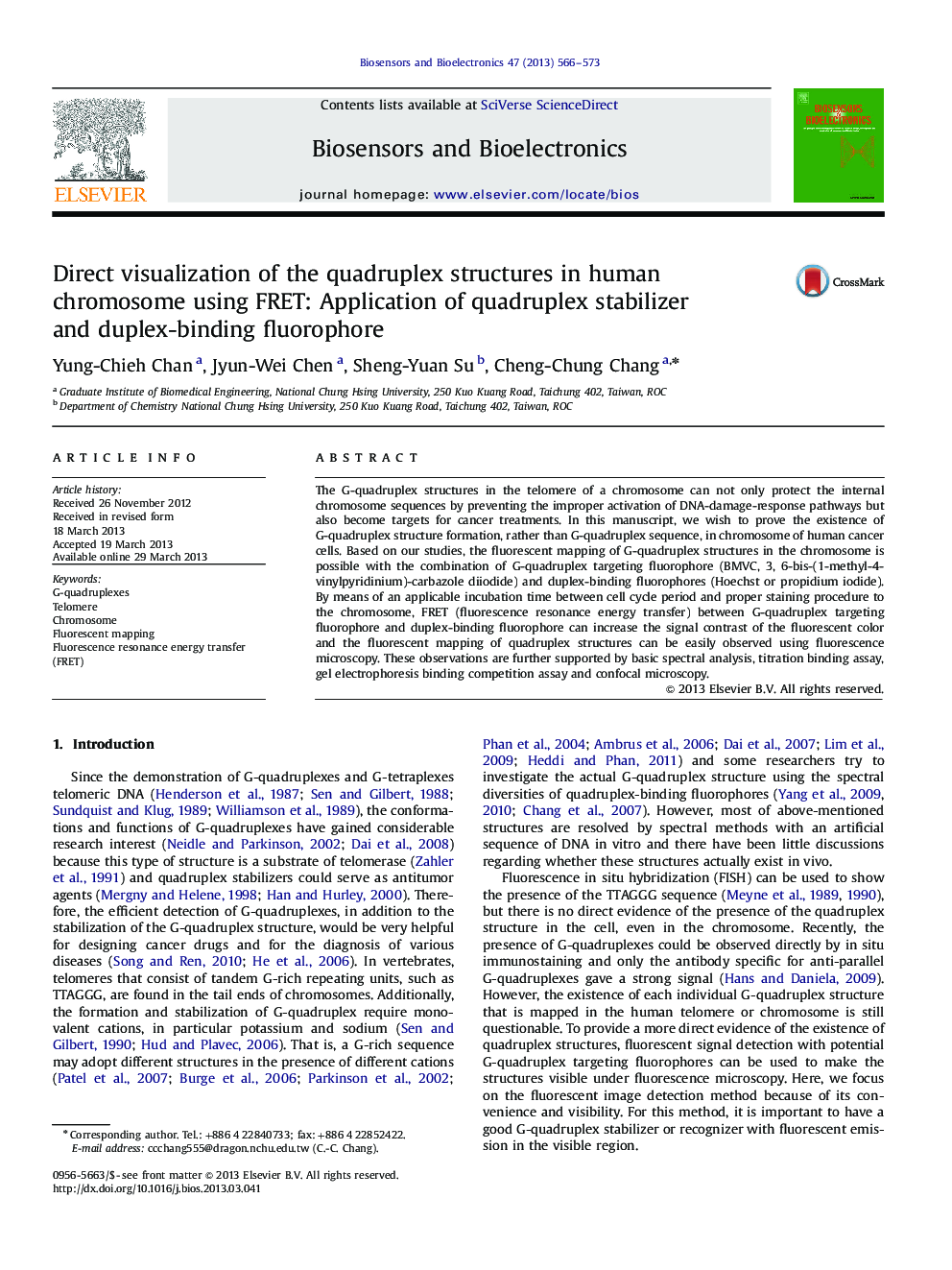| Article ID | Journal | Published Year | Pages | File Type |
|---|---|---|---|---|
| 867010 | Biosensors and Bioelectronics | 2013 | 8 Pages |
●We provide a direct evidence of the quadruplex structures in chromosomes.●FRET occurs between duplex-binding fluorophores and G-quadruplex recognizing fluorophore.●FRET induced enhancement of fluorescent signal contrast between quadruplex and duplex.●This strategy was distinguished by FISH and antibody-labeling methods.
The G-quadruplex structures in the telomere of a chromosome can not only protect the internal chromosome sequences by preventing the improper activation of DNA-damage-response pathways but also become targets for cancer treatments. In this manuscript, we wish to prove the existence of G-quadruplex structure formation, rather than G-quadruplex sequence, in chromosome of human cancer cells. Based on our studies, the fluorescent mapping of G-quadruplex structures in the chromosome is possible with the combination of G-quadruplex targeting fluorophore (BMVC, 3, 6-bis-(1-methyl-4-vinylpyridinium)-carbazole diiodide) and duplex-binding fluorophores (Hoechst or propidium iodide). By means of an applicable incubation time between cell cycle period and proper staining procedure to the chromosome, FRET (fluorescence resonance energy transfer) between G-quadruplex targeting fluorophore and duplex-binding fluorophore can increase the signal contrast of the fluorescent color and the fluorescent mapping of quadruplex structures can be easily observed using fluorescence microscopy. These observations are further supported by basic spectral analysis, titration binding assay, gel electrophoresis binding competition assay and confocal microscopy.
Graphical abstractFigure optionsDownload full-size imageDownload as PowerPoint slide
